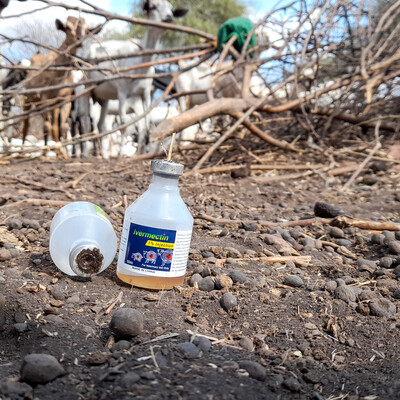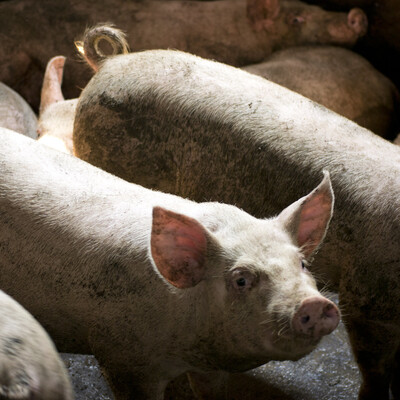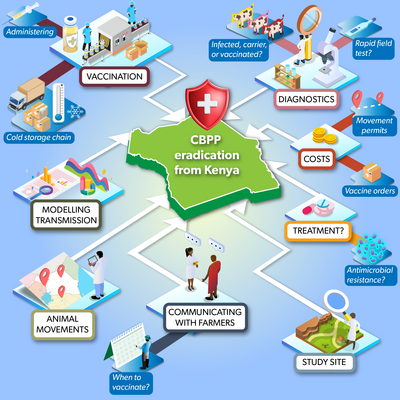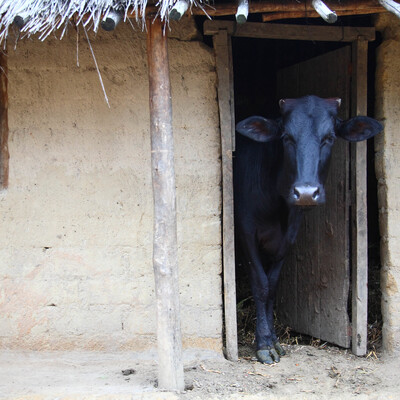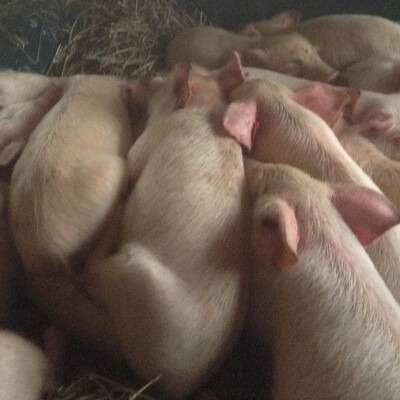

World’s tiniest library could be key to saving millions of cattle
One of the world’s smallest and strangest bacteria also is responsible for one of the most devastating cattle diseases.
The tiny bacteria, Mycoplasma mycoides subspecies mycoides (Mmm), cause contagious bovine pleuropneumonia (CBPP) when inhaled by cattle. CBPP is a huge barrier to cattle farming in sub-Saharan Africa, where it is endemic in at least 12 countries. It’s estimated to cost the continent over USD 38.8 million a year.
To fully understand these deadly bacteria, and pave the way to developing a better vaccine, scientists at the International Livestock Research Institute (ILRI) are constructing a full library of their genes and their possible functions.
What is CBPP?
Cattle with CBPP develop painful and inflamed, fluid-filled lungs, causing difficulty breathing and coughing. CBPP can infect nearly all of a herd and kill up to 50% of animals. Those that survive become weakened, and some may become chronic carriers that will breathe the bacteria onto other naive cattle.
Disease symptoms may appear several days to months following infection, so traditional methods of pastoralism and moving cattle over long distances can contribute to its spread. Although a vaccine is available, it has limited efficacy, and sometimes causes severe side effects which can make pastoralists reluctant to use it.
Mmm are part of a class of bacteria called mollicutes. In addition to lacking a cell wall—usually a widespread feature of bacteria—mollicutes have especially small genomes, by bacterial standards. This is why scientists once chose a Mycoplasma member to be assembled from components in 2008, as the world’s very first ‘synthetic organism’.
A tiny genome still hides an immense complexity. But it also opens up possibilities for a notable research approach currently being conducted at ILRI.
Building a library from bacteria

Since the early 2000s, ILRI has been a leading centre of CBPP research. Today, Elise Schieck leads ILRI’s work on Mycoplasma bacteria. She suspects that to make a better vaccine, the key stage to target in CBPP is early on in infection, when the bacteria first gains contact with a cattle’s lungs and start interacting with the lung cells there. It appears that this early interaction causes the cells of the lung lining to send self-destructive signals to the immune system, which instigates the onset of CBPP symptoms and progression of disease.
‘At ILRI, we are now working on the diseases that are not easy, like CBPP,’ says Schieck. ‘The easy ones have been solved 50 years ago. Now we're working with neglected diseases in Africa, which is why it's so important that we continue.’
Like every other living thing, a bacteria’s functions are controlled by its genes and Mmm being one of the smallest has around 1000 genes. Using different genomic engineering techniques, ILRI researchers hope they can turn off just one gene at a time, and then study how the modified bacteria behave in its disease-causing environment, leading to a better understanding of the function of each gene. Furthermore, this will indicate which genes in the bacteria are responsible for infecting the lung cells thus leading to disease progression and the outcome.
How to switch off a gene
A gene is a set of instructions that govern different functional pathways in a bacterium. However, these instructions can be made ineffective by just inserting a piece of nonsensical DNA in the middle of it. So, Schieck devised an approach that does this, using transposons.
Transposons are ‘jumping genes’—sections of DNA which can remove themselves from one part of an organism’s genome and insert themselves elsewhere. Found in all living organisms and microorganisms, their presence and function are complex, even mysterious. Excitingly, the human genome is made up of 46 per cent transposon DNA, even if nearly all of this no longer moves, and remain permanently integrated, they seem to have played a significant role throughout the evolution of life.
A Mmm mutant, then, could be created by infecting a bacterium with a transposon which will randomly insert itself into the genome, disrupting one of the genes, and remains stably integrated permanently. Then this process could be repeated enough times with the same strain of Mmm to produce a library of living mutants, covering all the different genes of the bacteria.
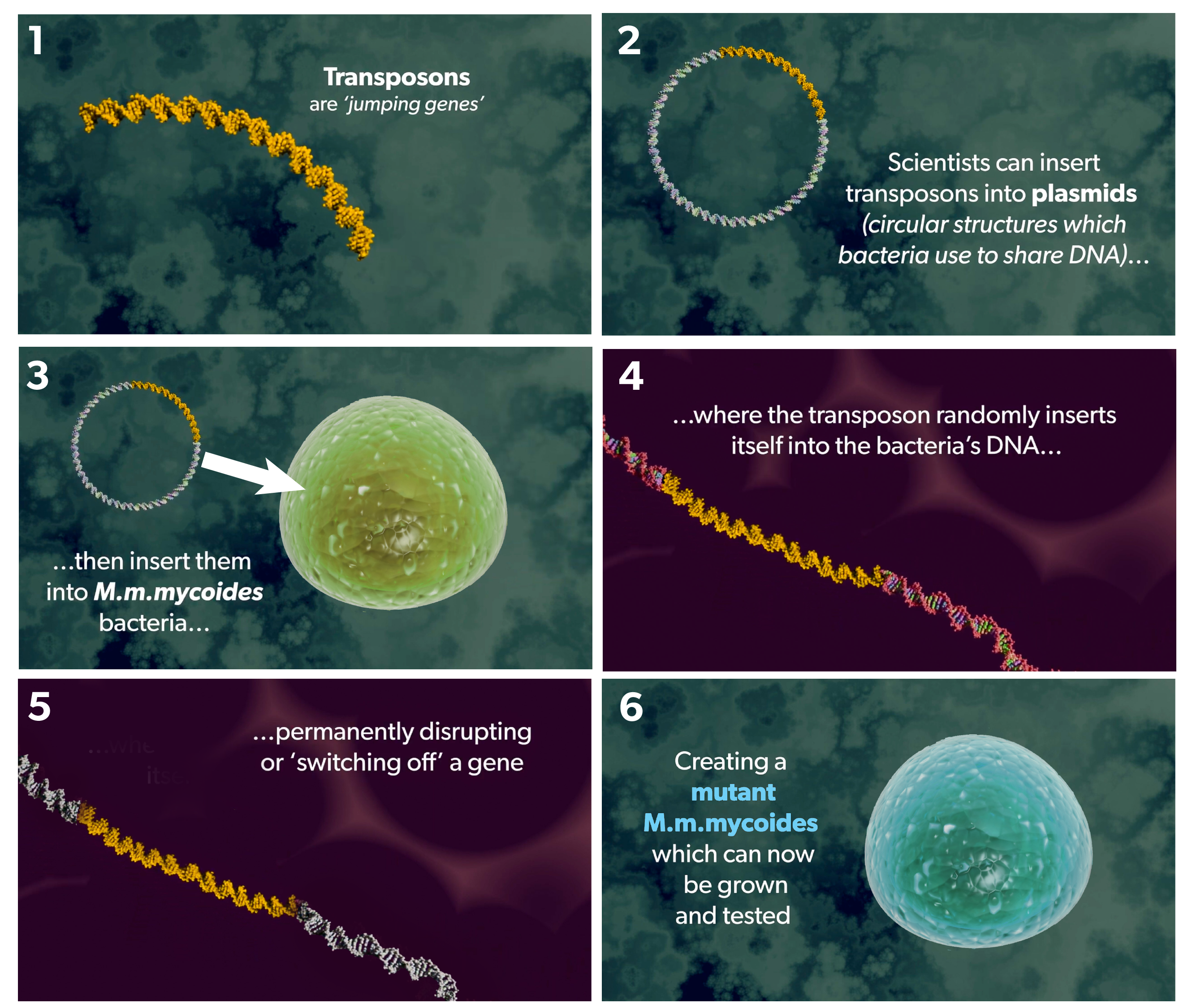
This is an achievable feat thanks to the small genome size of Mmm, though still a time-consuming one. Schieck and her fellow researchers, including Sarah Nyancheri, Angela Makumi, Winnie Chebore and Hussein Abkallo have worked for years on the library. As the location of transposon insertion in a genome is largely random, they have calculated that creating a library of at least 4000 separately stored mutants will be enough to cover all the genes of the Mmm genome.
The altered genomes of the mutants will be confirmed and recorded using the new and cutting-edge technology of nanopore DNA sequencing. Scientists will be able to see where the transposon has inserted itself, and therefore which gene has been disrupted and also how random this disruption was in the genome.
Using the library
The next step for the ILRI researchers will be to apply the mutants to carefully designed experiments in the lab, to simulate and study the first stages of infection. Interesting mutants discovered will thus be tested in the definitive host to check for attenuation and possibly be included in the vaccine pipeline.
But this living library of mutants will also be an invaluable resource for research beyond ILRI, for researchers of Mmm and CBPP all over the world.
In addition to building the transposon library, a future ILRI project will challenge the policy approach to managing CBPP, which has long become outdated, building a bridge in the different control strategies of the disease.
You may also like
Related Publications

Mastitis in goats: A comprehensive systematic review and meta-analysis of prevalence and the pathogens
- Tibebu, A.
- Teshome, Y.
- Tamrat, H.
- Bahiru, A.
- Yitbarek, T.
- Moliso, Mesfin M.
- Assefa, Ayalew

Review and comprehensive analysis of knowledge, tools, and implementation gaps for the control of contagious bovine pleuropneumonia
- Manso-Silván, L.
- Amanfu, W.
- Apolloni, A.
- Comtet, L.
- Heller, M.
- Muuka, G.M.
- Rafi, L.
- Rich, Karl M.
- Sacchini, F.
- Schieck, Elise
- Totté, P.

Overcoming Newcastle disease in rural family poultry: evaluating vaccine efficacy and field challenges in Burkina Faso
- Ouedraogo, A.
- Dione, Michel M.
- Ouoba, L.B.
- Ilboudo, Guy S.
- Ouedraogo, Brice
- Mungadi, H.U.
- Alders, R.
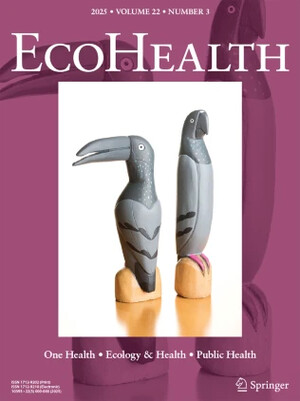
Disease risks for restoring endangered Sahelo-Saharan antelope: A literature review
- Ellis, L.
- Yu, J.H.
- Mertes, K.
- Cox, S.
- Desamours, I.
- Abakar, M.F.
- Pesci, M.E.
- Sikli, L.
- Cook, Elizabeth A.J.
- Zimmerman, D.





